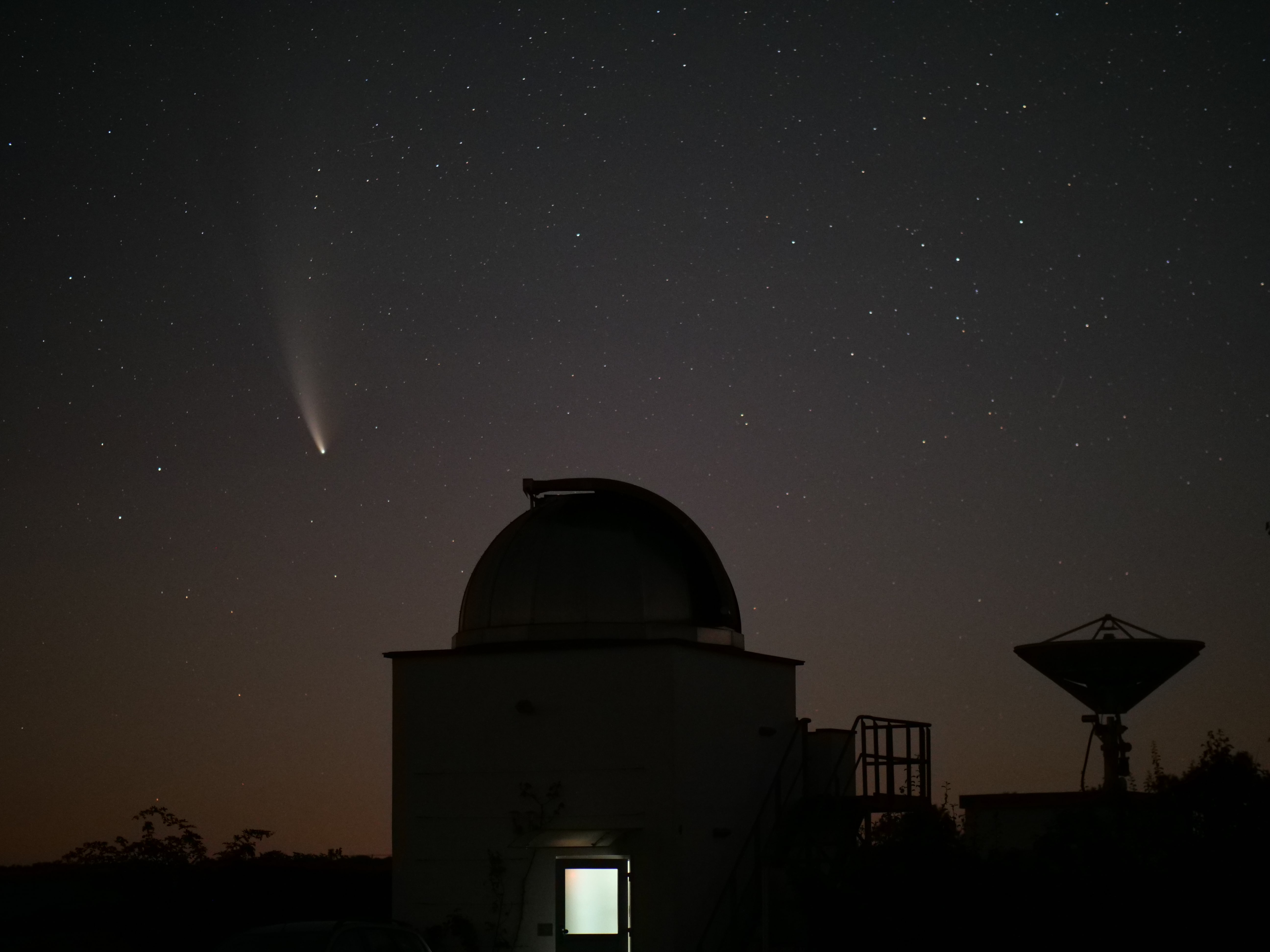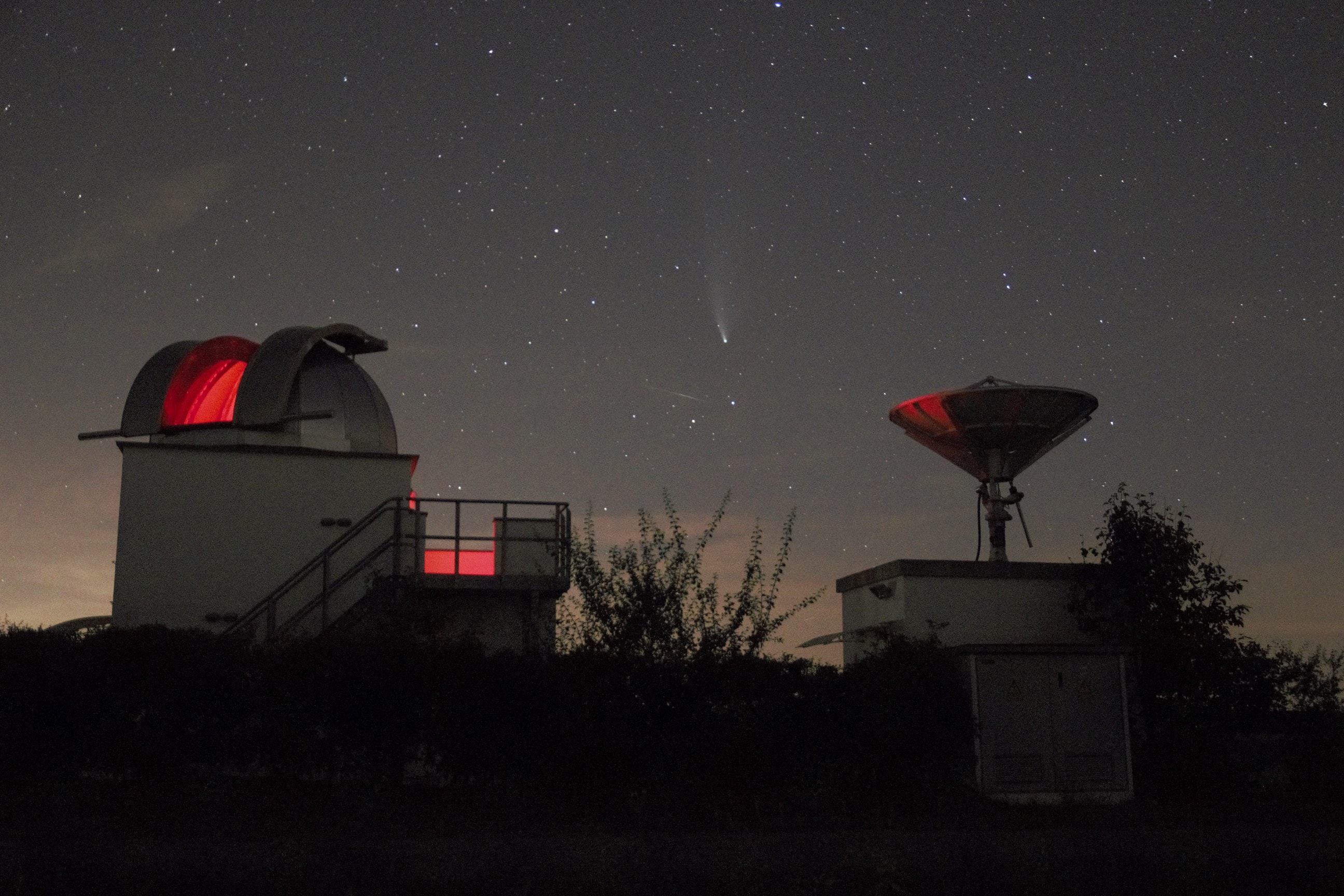Komet C/2020 F3 (Neowise) über der Hans-Haffner-Sternwarte
Für einen Kometen dieser Größe – der Durchmesser wird von der NASA auf ca. 5000 Meter geschätzt – ungewöhnlich spät wurde dieses Himmelsobjekt erst im Frühjahr dieses Jahres entdeckt. Am 27. März 2020 detektierte der Wide-Field Infrared Survey Explorer der NASA (WISE) den Kometen im Rahmen des NEOWISE-Projekts, das den Südhimmel durchmustert.
Schon am 3. Juli erreichte der Komet C/2020 F3, wie er seitdem korrekt heißt, sein Perihel, also den sonnennächsten Punkt auf seiner elliptischen Bahn. Kometen bestehen hauptsächlich aus Eis und Staub – sie werden deshalb von Astronomen auch als dirty snowballs (schmutzige Schneebälle) bezeichnet – wobei es sich um Eis aus Wasser, Kohlenstoffmonoxid und Kohlenstoffdioxid handelt. Nähert sich ein solcher Eisball der Sonne, so beginnt der leicht flüchtige Teil der Materie zu verdampfen und bildet die Koma (Hülle) um den Kern des Kometen. Durch den Sonnenwind wird ein Teil der Koma weggedrückt, was dann als Schweif zu sehen ist.
Ab Anfang Juli war NEOWISE, so sein umgangssprachlicher Name, sehr gut am Morgenhimmel über der Hans-Haffner-Sternwarte zu beobachten. Da er sich nun wieder von der Sonne entfernte, wurde er mit jedem Tag dunkler. Gleichzeitig verschob sich die Sichtbarkeit im Tagesverlauf weiter nach vorne, so dass er ab Mitte Juli auch am Abendhimmel zu sehen war. Am 23. Juli hatte er mit 103,5 Mio. km den geringsten Abstand zur Erde erreicht. In den darauffolgenden Nächten wurde die Helligkeit dieses Schweifsterns immer geringer und seit Anfang August ist er mit bloßem Auge nicht mehr zu erkennen. Wenn er seine Reise durch das All unbeschadet übersteht, wird C/2020 F3 erst wieder in 6700 Jahren an der Erde vorbeiziehen.





